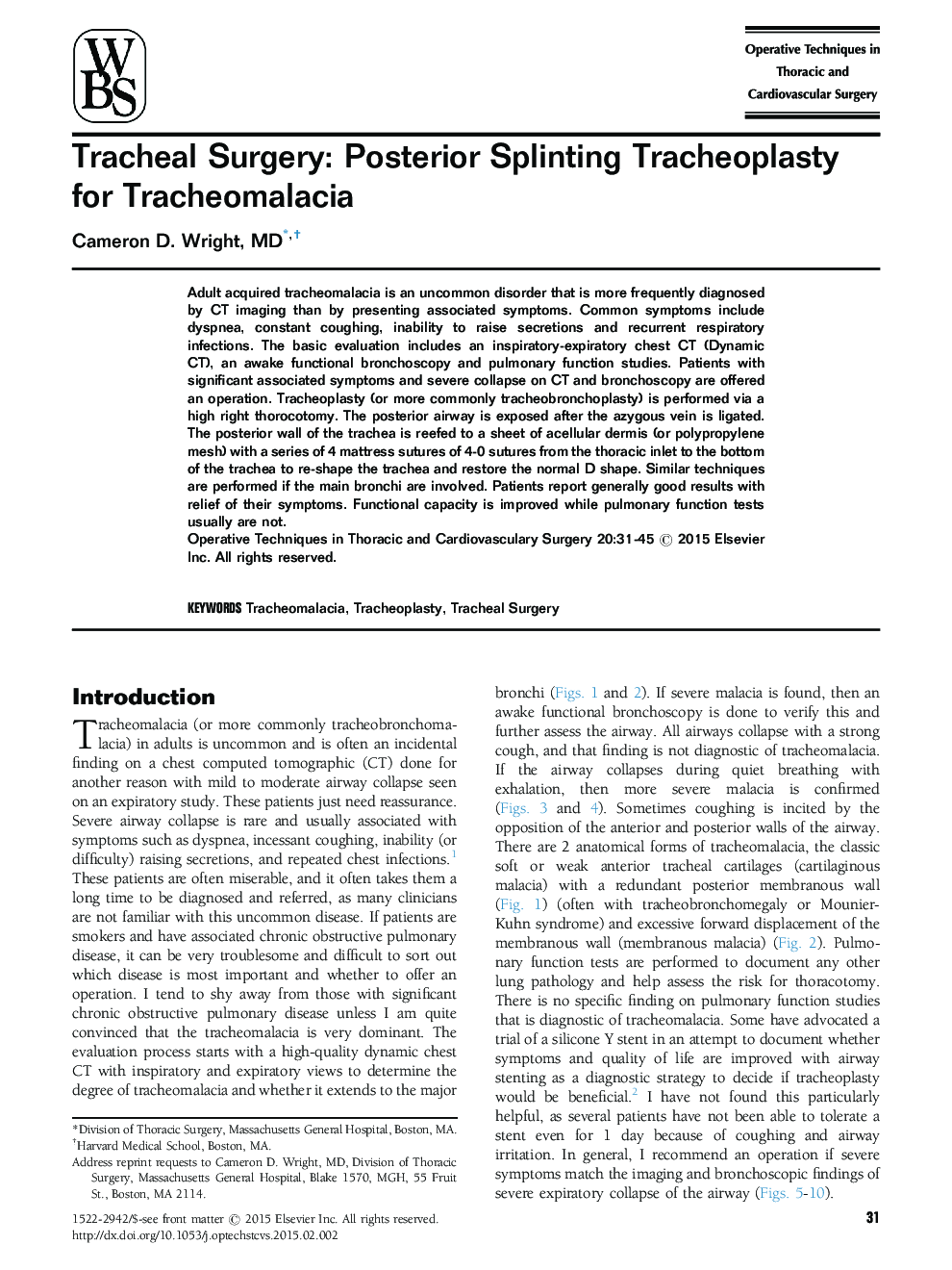| Article ID | Journal | Published Year | Pages | File Type |
|---|---|---|---|---|
| 3004779 | Operative Techniques in Thoracic and Cardiovascular Surgery | 2015 | 15 Pages |
Adult acquired tracheomalacia is an uncommon disorder that is more frequently diagnosed by CT imaging than by presenting associated symptoms. Common symptoms include dyspnea, constant coughing, inability to raise secretions and recurrent respiratory infections. The basic evaluation includes an inspiratory-expiratory chest CT (Dynamic CT), an awake functional bronchoscopy and pulmonary function studies. Patients with significant associated symptoms and severe collapse on CT and bronchoscopy are offered an operation. Tracheoplasty (or more commonly tracheobronchoplasty) is performed via a high right thorocotomy. The posterior airway is exposed after the azygous vein is ligated. The posterior wall of the trachea is reefed to a sheet of acellular dermis (or polypropylene mesh) with a series of 4 mattress sutures of 4-0 sutures from the thoracic inlet to the bottom of the trachea to re-shape the trachea and restore the normal D shape. Similar techniques are performed if the main bronchi are involved. Patients report generally good results with relief of their symptoms. Functional capacity is improved while pulmonary function tests usually are not.
